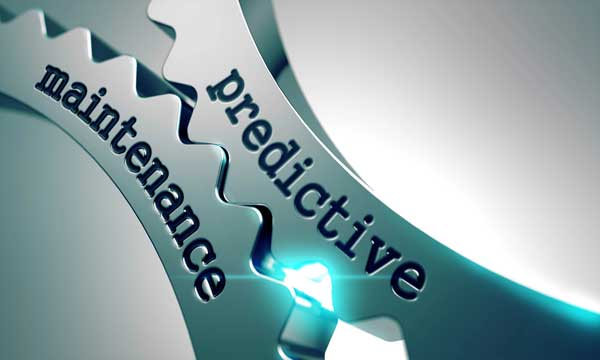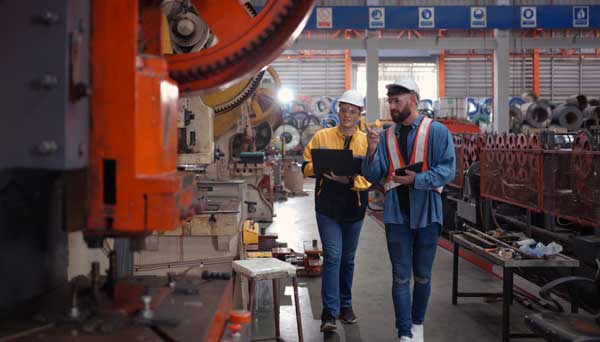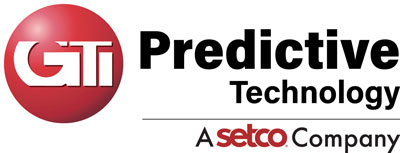
If you’re reading this, you’re most likely aware that there are many benefits to a well planned and executed predictive maintenance program. They include minimizing downtime, increasing efficiency, and keeping delivery on schedule. This message is out there, and awareness is growing. So, the big question: where do you start? Once you do, then what? Today, we will review the key steps to planning and implementing a successful predictive maintenance program at your facility.
Step 1: Take Inventory of Your Assets
This should be a fairly easy task, as you most likely have some sort of listing of your critical and not-so-critical equipment. But be sure to document as much as you can about each, including:
- Type, age and condition of equipment
- Existing maintenance, whether preventative or reactive (what are you doing for each piece of equipment, how often, etc.)
- Historical failure rates and patterns. Exact details are helpful, but even a general idea is valuable info.
- Existing monitoring capabilities, especially for newer equipment that may have some sort of data tracking available
Having this inventory is a critical first step in planning as it will help you identify the gaps, and start to give you an idea where resources are most needed.

Step 2: Prioritize Your Assets
To be successful with any predictive maintenance program, it’s important to understand that not all equipment requires the same level of monitoring. To guide in this effort, you will need to classify each based on their criticality to your manufacturing process. Doing this allows you to understand which approach is required for each tier. This is important since costs vary among them. We recommend a tiered approach as follows:
- Tier 1 – Critical Assets – This is reserved for your “mission-critical” equipment. These are the ones whose failure would cause significant production disruption, as well as safety hazards or environmental issues. These are the ones that will require continuous monitoring solutions that supply real-time data, allowing you to respond quickly to issues that could lead to failure.
- Tier 2 – Important Assets –This class contains machinery that will impact operations, but with less impactful consequences. Typically, this equipment can be monitored by using a combination of both wireless and route-based approaches.
- Tier 3 – Standard Assets – This is your non-critical equipment that has minimal impact on day-to-day operations. These are usually ideal for periodic route-based monitoring.
Prioritization of your assets helps ensure that you allocate predictive maintenance resources to where they’ll return the best return on investment.

Step 3: Management Buy In
We’ve previously written on approaches to getting leadership to buy-in on implementing a predictive maintenance program. Today, we’ll focus on the most effective piece – showing them how much the lack of a predictive solution is costing them. This involves three key steps as follows:
- Documenting and quantifying production (and business) losses from past failures. Did downtime cost you a customer? If so, remember the loss is greater than just the revenue from that one job. Include the customer lifetime value cost of that loss.
- Don’t forget secondary costs such as expedited repairs or parts delivery, overtime labor, and quality issues
- Then compare these reactive maintenance costs against projected predictive maintenance investments
Yes, it’s a bit tedious to calculate all of this. But producing financial justification is critical for demonstrating the real value of your proposed program.

Step 4: Determine Your Data Analysis Approach
With predictive maintenance, monitoring and collecting data is only half of the equation. That data needs to be interpreted and turned into actionable insights. So, the big question, as discussed in a recent blog, should you “make or buy”? At a high level, you have three options.
- Current In-house Team – Do you already have reliability engineers or technicians who already understand or can be trained to analyze vibration, thermal, and other condition factors?
- New Hires – Is your operation big enough to benefit by adding dedicated predictive maintenance specialists to your team?
- Outsourcing – Would a professional predictive maintenance service provider offer better expertise and cost efficiency?
The best approach might just be a hybrid approach, with in-house technicians handling routine analysis while specialists can consult for more complex cases, or help monitor more critical assets.
Step 5: Select the Right Technology
Now that your strategy is outlined, it’s time to select one of the many predictive maintenance solutions available on the market today. Do you need something as simple as a few handheld gages, perhaps take a step up to one Engineer in Box portable predictive maintenance solutions, or something more robust such as VibePro complete system? Consider the following:
- Be certain that the predictive maintenance system can monitor all of your critical parameters such as vibration, temperature, oil condition, etc.
- Compatibility with your existing systems and equipment, including connectivity requirements and limitations
- Ease of implementation
- Ease of use for your maintenance team
- Scalability for future expansion
- Look for solutions with clear, actionable reporting capabilities

Step 6: Implementation and Training
Only two more steps to go! But this is a biggie – rollout. For most situations, we recommend
a phased strategy. Here, you will pilot the program by monitoring a few critical assets. Start with baselining readings for each piece of equipment. Then setup alarm thresholds based on manufacturer’s recommendations and industry standards.
You’ll need to train your maintenance staff on the new technology, workflows and standard operating procedures. These should focus on how different types of alerts will be responded to. No time for finger pointing when an alarm goes off, individuals should know exactly what to do based on training and task assignment.
Taking this methodical approach will help minimize disruption while encouraging adoption as uses and stakeholders build confidence in the program.
Step 7: Measure Results and Continuously Improve
Predictive maintenance success does not happen overnight, it evolves over time. A few quick pointers:
- Track key performance indicators such reduction in unplanned downtime, maintenance cost savings, and extended equipment life
- Review and refine your alarm thresholds
- Schedule routine assessments to help plan next steps
- Document and share success stories across your organization
- Continuously train your staff on evolving best practices
Conclusion
Implementing predictive maintenance represents a significant shift from reactive to proactive asset management. While the transition requires careful planning and investment, the returns—in reduced downtime, extended equipment life, and improved operational efficiency—typically far outweigh the costs. By following these seven steps, you’ll be well on your way to a more reliable, efficient, and profitable manufacturing operation.
